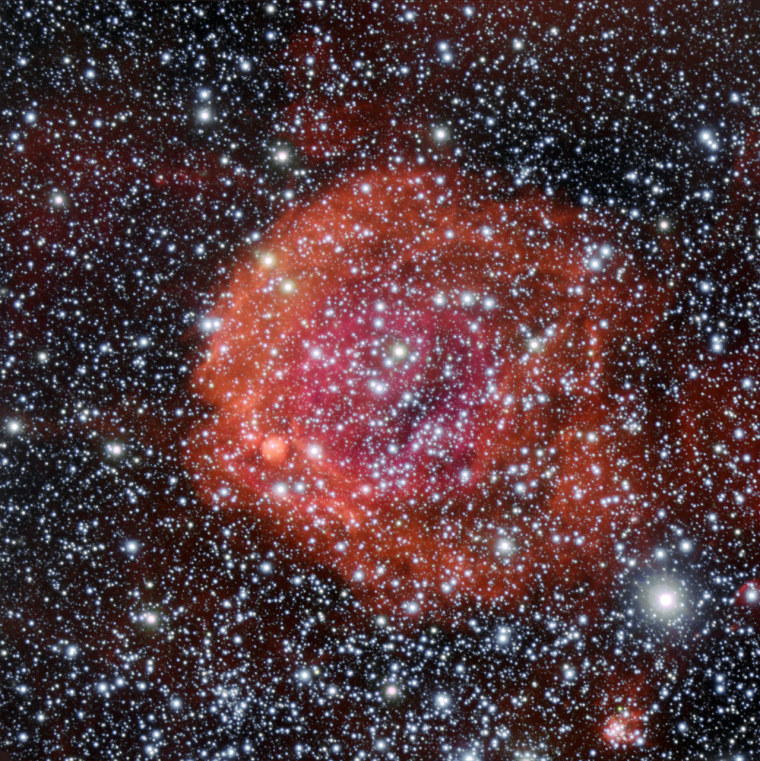Bask in the healthy glow of the star cluster and nebula known as NGC 371. This reddish region is a cloud of glowing hydrogen that is giving rise to hot young stars. NGC 371's host galaxy is the Small Magellanic Cloud, a dwarf galaxy that's a mere 200,000 light-years from Earth. There are lots of open star clusters in our celestial neighborhood, but NGC 371 is worthy of note because of the unexpectedly large number of variable stars that it contains.
This picture is based on data collected by the FORS1 instrument on the European Southern Observatory's Very Large Telescope in Chile. Argentina's Manu Mejias turned the archived data into the picture you see above, which won sixth place in the ESO's Hidden Treasures competition in January.
Just this week, the ESO and Europe's Hubble team served up even more goodies for fans of space imagery: Apple iPad users can download two new apps that show off the top 100 images from the ESO, and another 100 stunners from the Hubble Space Telescope. No iPad? No problem! You can see both top-100 lists on the ESO website and the European Space Agency's Hubble site. And while you're clicking around, have a look at our own Space Gallery.
Join the Cosmic Log community by clicking the "like" button on our Facebook page or by following msnbc.com science editor Alan Boyle as b0yle on Twitter. To learn more about my book on Pluto and the search for planets, check out the website for "The Case for Pluto."
